Wondering if the rowing machine or the Stairmaster is best for your training and weight loss goals? Here’s a detailed look at the rowing machine vs Stairmaster so that you can maximize your time in the gym.
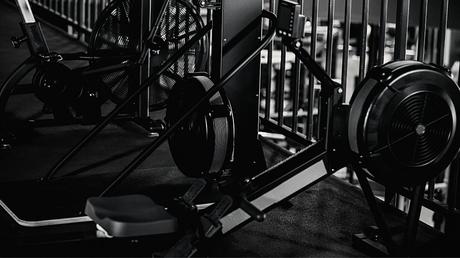
When it comes to workouts, we all want the most effective and efficient option that will get us to our goals faster.
No fiddling around on the easy-breezy machines, no wasting time on a “light” workout. It’s full intensity, full efficiency, all the way!
If that’s your approach to your training, then you’re going to love what I’ve got for you today…
In this post, I’m going to compare two of the most commonly used cardio machines for weight loss—the stair climber and the rowing machine—and see how they stack up against each other.
We’ll compare all the most important metrics, including calories burned, muscles worked, the injury risk, impact to both your body and your wallet, and more. The goal: to ensure you know which of the two machines will deliver the best results for your workouts.
By the end of this article, you’ll have a much clearer idea which of the two machines will be the better use of your time.
So let’s jump right in and find out, shall we?
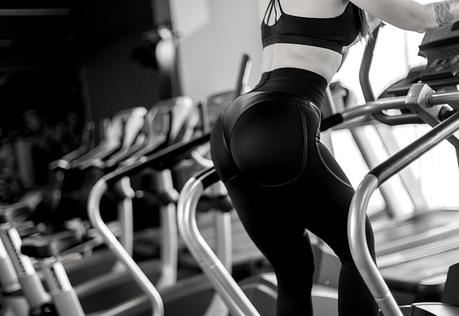
Rowing Machine vs Stairmaster – Comparison
 Calories Burned
Calories Burned

Let’s start off with an easy one: the number of calories burned on the rowing machine and the stair climber, respectively.
“Calories burned” is a great metric because it’s a quantifiable one—it’s literally a numerical value that tells you just how much energy you expend in your training session.
As you well know, burning more calories is crucial for weight loss, so the more calories a machine burns, the more effective it is for your weight loss—and, specifically, fat loss.
According to the Harvard Medical School1:
- A 125 pound person can burn 210 calories in a 30-minute “moderate” paced rowing workout
- A 155 pound person can burn 252 calories in a 30-minute “moderate” paced rowing workout
- A 185 pound person can burn 294 calories in a 30-minute “moderate” paced rowing workout
Not bad, right?
But what happens if we increase the pace slightly, add some intensity to our rowing?
- A 125 pound person can burn 255 calories in a 30-minute “vigorous” rowing workout
- A 155 pound person can burn 369 calories in a 30-minute “vigorous” rowing workout
- A 185 pound person can burn 440 calories in a 30-minute “vigorous” rowing workout
All right, now that’s getting us some results! Using the rowing machine for weight loss is absolutely worth it.
How does the stair climber stack up? Well, according to the same experts:
- A 125 pound person can burn 180 calories in a 30-minute “general” stair step machine workout
- A 155 pound person can burn 216 calories in a 30-minute “general” stair step machine workout
- A 185 pound person can burn 252 calories in a 30-minute “general” stair step machine workout
Ahh, so you see the difference there! While both machines burn calories, the rowing machine has a slight advantage in overall caloric expenditure.
Why is that, you ask? Simple: it comes down to the muscles worked (see the next section) and the way the two exercises engage the body.
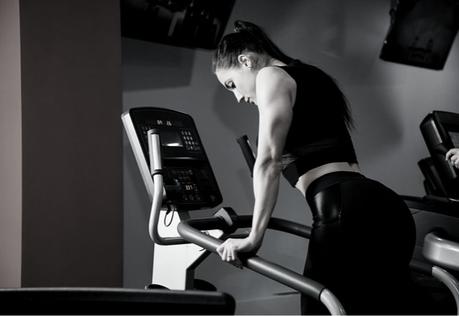
As you know, your muscles burn through stored energy when they work, meaning they force your body to mobilize stored energy (from your bloodstream, liver, and fat cells) in order to keep them supplied.
The longer you work and the more calories your muscles burn through exercise, the more it taps into stored fats, which in turn leads to weight loss.
Because the rowing machine burns more calories than the stair climber (even on a “general” and “moderate” level of exercise), it’s the better choice for weight loss and fat-burning.
 Muscles Worked
Muscles Worked

As I mentioned above, it’s your muscles that burn the calories, because your muscles burn through existing energy stored and force your body to mobilize more.
When it comes to exercise, the simple formula is often “more muscles worked, more calories burned”.
So, when we look at the muscles worked on the rowing machine versus the muscles worked on the stair climber, you can clearly see why the rowing machine is the better choice for burning calories and fats.
Whether you’re doing a rower machine workout for beginners or a truly expert-level training session, the muscles engaged during the rowing movement remain the same:
- Upper body: Upper back, shoulders, biceps, forearms
- Core: Abdominals, lower back (spinal supporters)
- Lower body: Quadriceps, hamstrings, gluteals, and calves
As you can see, that’s nearly all of your muscles. The only ones that aren’t getting invited to the rowing party are the “push muscles” (the chest and triceps) and the obliques (because there’s no real sideways or twisting movement). Otherwise, it’s your entire body getting to work in the rowing movement.
Now, how does the stair climber stack up? What kind of muscle engagement can you get when climbing stairs?
Well, it’s pretty much entirely lower body-focused. That means it’ll recruit the same lower body muscles as rowing—the quads, calves, hamstrings, and glutes—to push your body up stair after stair. There is some core engagement, too, your abs and lower back working to keep your upper body balanced.
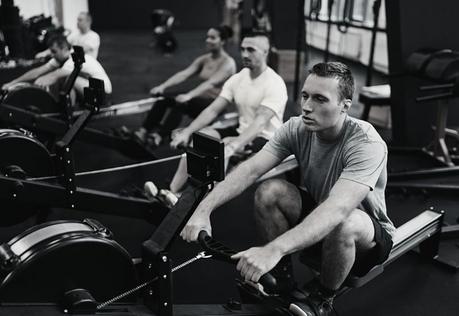
However, if you’re doing the workout right and not leaning heavily on the rails for support, your upper body is basically removed from the equation. It’s all on your legs to do the hard work!
While this makes the stair climber great for training just your lower body, I’m always in favor of more full-body workouts, because they use more muscles more efficiently to strengthen them with less time spent training.
Ultimately, the rowing machine ends up being the better choice because it works more muscles overall.
 Functional Fitness
Functional Fitness

The term “functional fitness” refers to fitness that translates into more effective performance of your activities of daily life.
What activities are those, you ask? They could be anything, including:
- Running with your pets
- Playing with your kids
- Carrying the shopping into the house
- Taking out the garbage
- Hiking or trekking with your buddies
- Paddling a canoe or kayak
- Cycling around town
- Walking
- Climbing stairs
Basically, any sort of activity that you’re likely to perform on a daily or regular basis, those would be considered your “activities of daily life”.
When considering which cardio machine is “best”, I always look at which help me to perform those activities of daily life most effectively.
The “functionality” of the rowing machine is pretty much restricted to a single activity: rowing a boat. That wasn’t an activity I had much chance to get involved in during my younger years, until I came across the delightful summer sports of kayaking, canoeing, and paddleboarding.
That year was the year I learned how to use a rowing machine.
Though the rowing movement isn’t exactly identical to paddling a kayak or paddleboard, it works the same muscles and is close enough that the strength and cardiovascular endurance I built during my row machine HIIT workouts translated into better performance when out on the water.
Granted, this is very limited, and it’s not something I can use year-round.
On the other hand, the stair climber really is a functional machine that trains for one of the most common activities in daily life: climbing stairs.
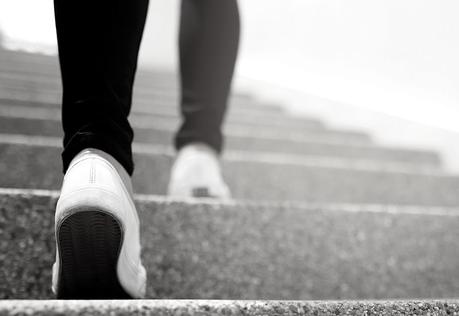
Think about how many stairs you climb every day, and it will shock you just how often you do it without really thinking:
- Climbing up and down the stairs in your home
- Climbing up and down the stairs in your office building
- Climbing up and down steps outside
- Climbing up and down steps at a football game or soccer stadium
Really, there are stairs everywhere. You can’t go through an entire day in your normal life without climbing at least a few.
So any exercise that trains you to climb stairs more efficiently is definitely going to be a very functional form of exercise.
 Impact and Injury
Impact and Injury

There are two aspects that tie together and are critical elements to consider when planning your workouts:
1) Impact to Your Joints
Every time you lift your feet off the ground, there is impact when your foot again strikes the ground and you transfer your weight onto it. The faster and harder that striking and weight transfer takes place, the higher the impact.
For example, jumping is the highest-impact form of exercise, with running being slightly lower, jogging being lower still, and walking being very low impact.
Why is this a factor to consider? Simple: more impact means more strain on your bones, joints, and muscle.
Some high-impact exercise is good for you, because it forces your bones, joints, and muscles to grow stronger and more resilient. However, over-training at high-impact exercise can lead to breakdown of these tissues, in turn leading to injuries.
So it’s always best to combine low- and high-impact exercise to ensure your body isn’t being overworked.
One of the best benefits of rowing machines is that it’s a very low-impact form of exercise. In fact, because your feet remain firmly planted on the pedals throughout the entire training session, there’s virtually no impact.
On the other hand, because you’re lifting your feet to climb a step and then shifting all your weight forward onto that foot, stair climbing is a higher-impact form of exercise. It’s not as high-impact as running or jumping, but it’s not as gentle on your joints as rowing.
2) Injury Risk
It’s important as you age (but even while young) to consider how likely any kind of exercise is to lead to injury—both acute injury (from a fall or sudden strain/sprain) and chronic injury (from overusing the muscles, bones, and joints).
When you’re young, your body is more resilient and can heal faster from any injuries. But the more you age, the longer it takes to recover, so the more “vulnerable” you are to any injuries you sustain. Too many piled on top of each other can compound small problems, turning them into big ones.
With rowing, there is very low risk of acute injury, because A) your muscles are working at significantly below “strain” level, and B) because there is minimal risk of falling off the machine.
You’re most at risk of over-use and chronic injuries, such as:
- IT band friction in the knee
- Lumbar back pain
- Wrist extensor tenosynovitis
- Shoulder impingement
However, with the proper form and sufficient rest between workouts (24-48 hours), your injury risk is fairly low.
With the stair climber, you’re also at a fairly low risk of acute injury, because the machine is safe and stable and you’re not really working at full output. And, because you’re working only your lower body, the joints that may suffer damage from over-use and over-training are limited to your lower body:
- Hips
- Knees
- Ankles
- Foot bones
Be warned, though: your knees are at the greatest risk with the stair climber.
Because of the nature of the movement (pushing upward with your knee bent), you’re far more prone to suffering knee pains and joint problems with the stair climber than with nearly any other machine in the gym.
 Cost and Footprint
Cost and Footprint

Last, but certainly not least, you’ve got to consider the cost of the machine you’re adding to your home gym, and the footprint, or the amount of space it takes up.
Cost
A rowing machine will run you anywhere from $300 to $2,000, depending on quality. Lower-end machines will run in the $300 to $500 range, with mid-range machines costing you $600 to $1200.
At the highest end of the spectrum, the top-of-the-line rowing machines will end up costing you no more than $2,000—and that’s with all the fancy tech bells and whistles included.
On the other hand, stair climber machines tend to be pricey. You won’t find a good-quality stair climber machine for under $2,000, and some can rise as high as $7,000 or $8,000. That’s a lot of money to spend on a single gym machine!
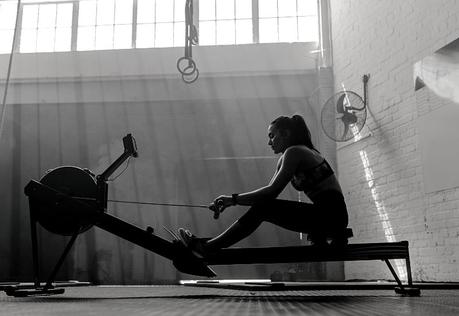
Footprint
When looking at the footprint of the two machines, there’s usually a pretty clear winner.
Your average rowing machine will be around 90+ inches long and 24+ inches wide. However, many of them are designed to fold or stand up, and when in “stored position”, their footprint is really only around 24-28 inches wide and long.
On the other hand, stair climber machines are big and very bulky by comparison. You’re looking at minimum 36 inches wide and long, and another 65+ tall. There is no way to shrink them down or fold them up—they’re always going to take up that much space in your gym.
Rowing Machine vs Stairmaster – The Final Verdict
The rowing machine is perfect for people who:
- Love a beginner-friendly HIIT workout
- Enjoy spending their summers paddling or rowing on the water
- Prefer to burn more calories with every training session
- Want a full-body workout
- Need a low-impact, low-injury form of exercise
- Want to keep their gym setup cost-efficient and space-efficient
The stair climber machine is perfect for people who:
- Want to improve their functional fitness specifically for climbing stairs (or steep mountain trails)
- Have more money to spend on a pricey machine and a much more spacious gym
- Prefer to focus on training only their lower body
The Bottom Line
As you can see, both cardio machines have their pros and cons, and any smart trainee will know that both deserve a place in their workout regimen.
For example, if you’re hammering your upper body with your weight training, you can give your muscles a break and switch to stair-climbing to burn some extra calories and work on your cardio without pushing your body to the point of burnout.
On the other hand, if you’re using your cardio as your resistance training, you can get in a 30, 45, or 60-minute rowing session to really see results.
It’s all about being smart with the way you train, and using the machines in your gym to maximum efficiency.
More Articles and Guides Like This
5 Rowing Machine Workouts for Beginners (Plus Tips for Rowing Like a Pro). The rowing machine is the perfect low-impact and full-body cardio machine for beginners. Here are five rowing machine workouts for beginners and tips for doing them like a pro.
How to Master Proper Form on the Rowing Machine (and Classic Mistakes to Avoid). The rowing machine is one of the best cardio machines in the gym for losing weight and getting in shape. Here’s how to master proper form and technique, plus some classic mistakes commonly made when rowing.
